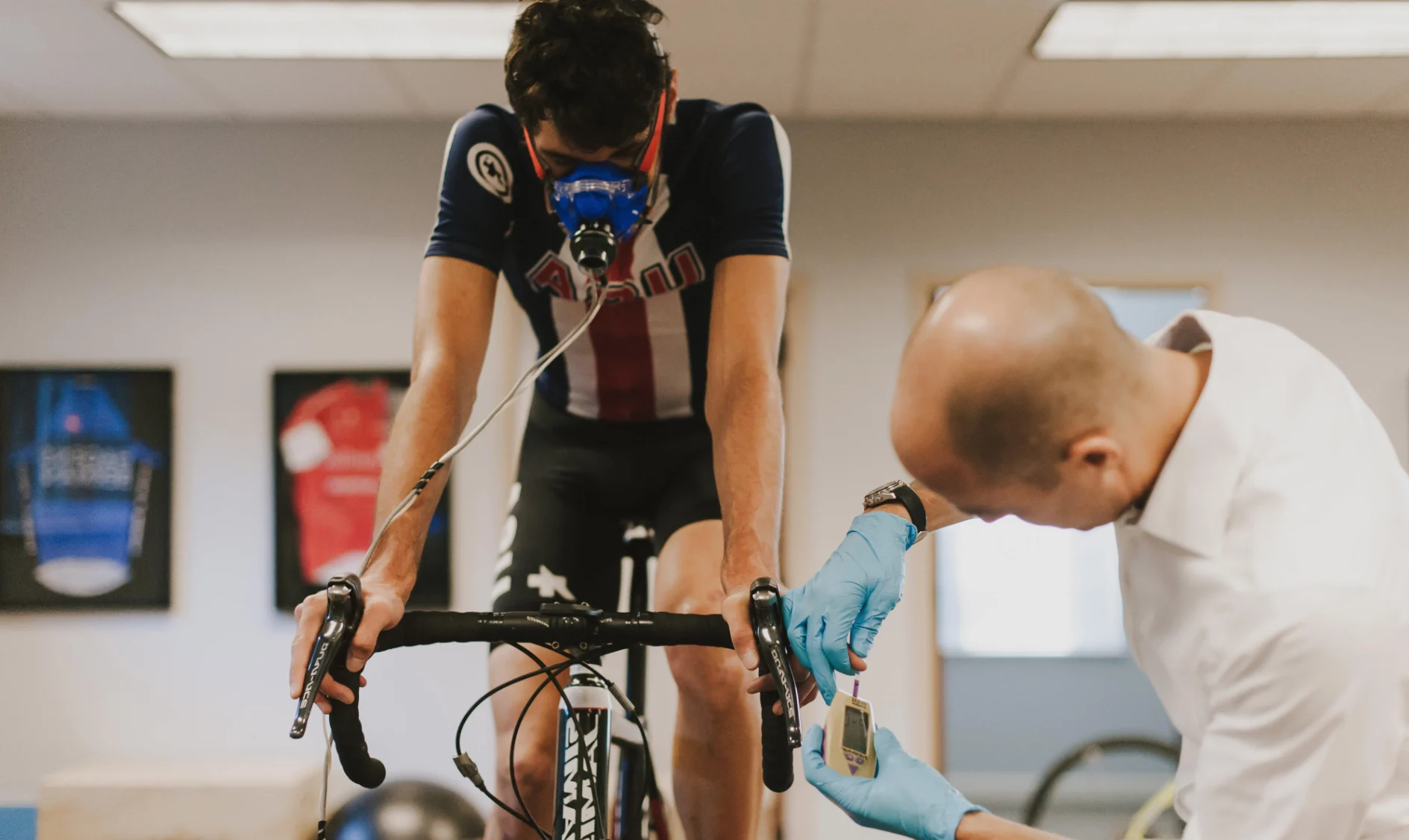Topics
- Article
Sports Med Doctor Shares How WHOOP is Instrumental to His Practice

Many doctors struggle to figure out how best to motivate their patients to engage in daily physical activity. Not me.
As a Sports Medicine physician, I work with elite and professional athletes from multiple disciplines, as well as many hard-charging “weekend warriors.” The vast majority of my practice consists of advising and treating this demographic. I’m also the Head of Medicine for a World Tour professional cycling team, with athletes scattered across the United States, Europe, Australia and South America. Whether they are cyclists, triathletes, runners, golfers, obstacle course racers, baseball players, CrossFitters, or athletes from any other sport, my patients tend to go hard.
In working with this driven athlete population, I focus not only on injury and illness treatment, but also on health, performance, and injury prevention. When I order blood tests, I’m often not looking for disease. Instead, I’m looking for early signs of imbalance, dietary deficiency and physiologic response to training stress. I evaluate lactate threshold profiles, continuous glucose monitors and training logs.
In my opinion, you can’t separate health from performance. A healthier athlete performs better, it’s that simple.
Despite having many technological and scientific tools at my disposal, I have always struggled with how to quantify the time between training sessions. While many of my athletes are professionals, most are not. They train hard, but they also work hard. They are engaged students, employees, spouses and parents who bear the burdens of everyday life. I was able to see workout data from their daily training, but I was blinded to how the other 20+ hours of the day were impacting their bodies.
Then I found WHOOP.
Late in 2016, I got a WHOOP Strap for myself. I enjoy trying out new pieces of technology as I hear about them. However, while I find most of them to be interesting, they are usually of questionable utility in the “real world.” As I type this though, I’m still wearing my WHOOP, more than a year later.
I’m no elite athlete, but I fall solidly into the “serious fitness enthusiast” category, training six days per week so that I can competitively jump into a weekend 10k, triathlon, bike race, or whatever. I do this while, like many of my patients, juggling the rest of life.
Playing with a new lactate testing protocol and software in the lab today.
A post shared by Podium Sports Medicine (@podiumsportsmed) on Oct 3, 2017 at 1:35pm PDT
What I quickly learned from WHOOP is that my Recovery was subpar, at best. I was failing to respect my Sleep Need, in particular with regard to the stress of frequent international travel for work. But, what I’ve found even more valuable is that WHOOP can allow me to assess the daily Strain, Sleep, and Recovery of my patients–it has been a fantastic clinical tool!
I now have numerous patients using WHOOP, and I can view their data on online dashboards from wherever I am. To be clear, I don’t watch their data on a daily basis the way a coach might. Instead, I periodically check for worrisome trends and reference it when consulting with them for a given health or fitness concern.
For example, last year it came to my attention that professional cyclist Lawson Craddock was struggling with declining performance, despite following a strict training regimen and nutrition plan. He was working harder and getting slower. While there were several variables in play, what it all boiled down to for Lawson was Overtraining Syndrome (OTS). We may think of this as simply going too hard for too long, but it’s more complicated than that. OTS is better thought of as an imbalance between training stress, dietary support and general recovery. As I said, a great number of things play a role in this complex equation and it can be quite difficult to make a diagnosis.
After ruling out many illnesses (always the first step in this process), we turned our attention to Lawson’s strain and recovery balance. The training stress is easily quantified with heart rate monitors and power meters, but the remainder of the picture can be a bit murky. What’s happening with his body during the other 18-20 hours per day? You are left to rely on subjective metrics and the recall of the athlete, which is extremely difficult. Can you remember the specifics of how you slept last Tuesday?
At that point, I’d been using WHOOP for a few months and had begun implementing it into my medical practice. I felt that it might be the perfect tool to get Lawson back on track. Not only could it help pinpoint areas that needed work (ie sleep), but it would also serve as a guide for his prescribed training load by quantifying his daily Strain. Once Lawson got back to regular training after some time off, he’d be able to use the WHOOP Recovery metric to pick when he could go hard, and when he needed to back off and prioritize rest.
Fast forward to 2018. I just recently left our pre-season training camp in Spain, where Lawson was looking like his old self. His WHOOP has become invaluable to him as he’s learned a great deal about his body and its response to training. Returning from OTS is a long and difficult road, but Lawson is doing everything right–thanks to a little objective day-to-day guidance.
Lawson’s case is just one example of the many success stories I’ve seen over the past year. WHOOP has become an instrumental part of my practice that, in many ways, is as essential as my stethoscope.
RELATED: Lawson Craddock Tells His Strain & Recovery Story